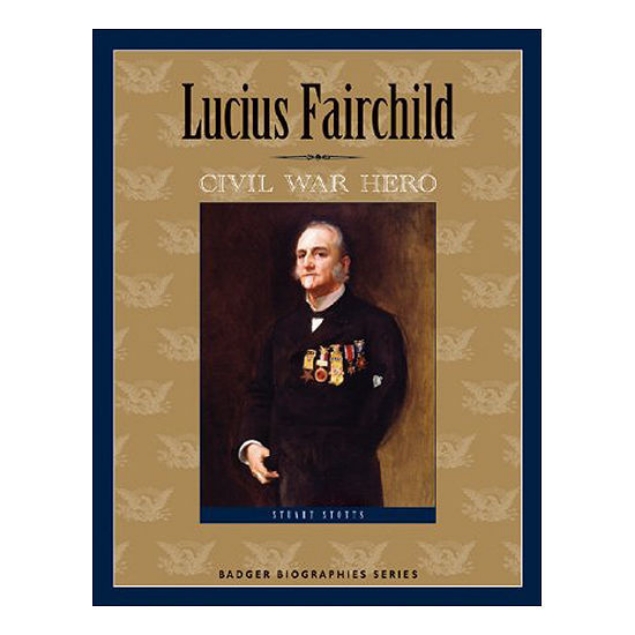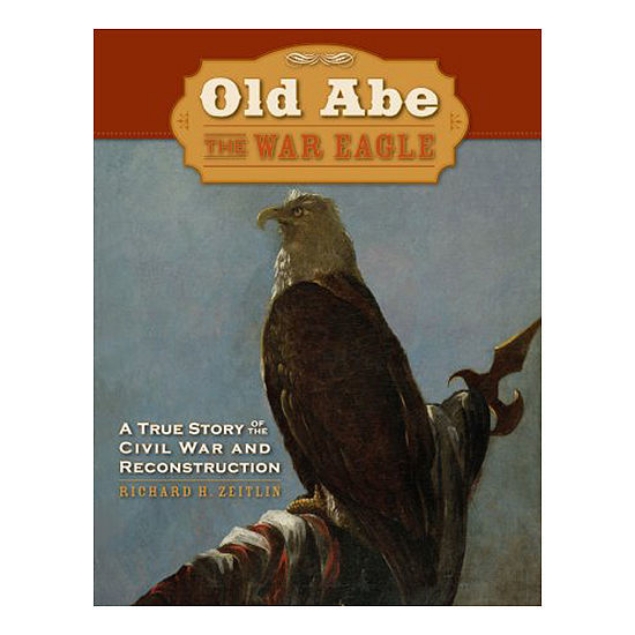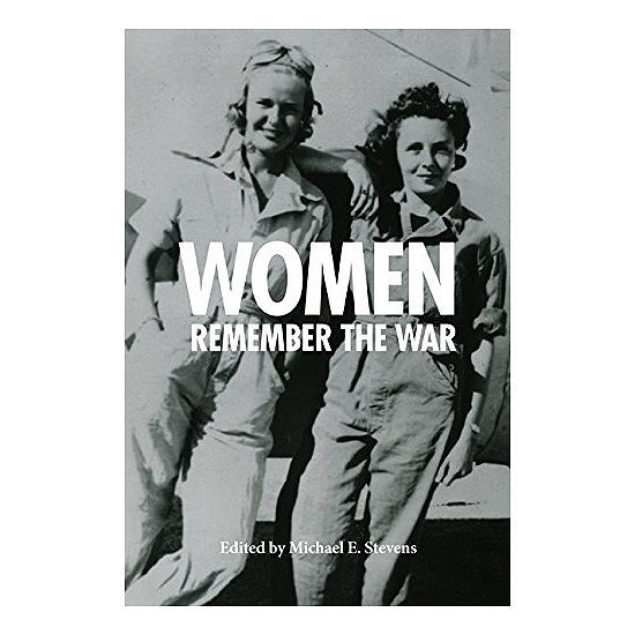War
Brownie the War Dog: Veterans' Best Friend
9781976600135
The true story of a family pet who served in WWII and went on to become a friend to wounded veterans.
$17.95
Red Arrow across the Pacific: The Thirty-Second Infantry Division during World War II
9781976600333
The Thirty-Second “Red Arrow” Infantry Division played a crucial role for the Allied Forces in the Pacific. Learn how this National Guard unit with origins in the Midwest became one of the most effective—and most battle-tested—US combat units in WWII.
$40.00
When is Daddy Coming Home? An American Family during World War II
9781976600401
A powerful memoir that illuminates life on the home front and the impact of World War II on an American family.
$19.95
A Black Hawk War Guide: Landmarks, Battlefields, Museums and Firsthand Accounts
9781467146098
Follow the war, from the Quad Cities on the Illinois/Iowa border through the “Trembling Lands” along the Kettle Morraine and into the Driftless Area of southern Wisconsin.
$24.95
A City at War: Milwaukee Labor During WWII
9780870207297
Paperback: $24.95
228 pages, 6 x 9
ISBN:9780870207297
Published by Wisconsin Historical Society Press
Ordering for retail, wholesale, school, library, or other tax-exempt organization?
228 pages, 6 x 9
ISBN:9780870207297
Published by Wisconsin Historical Society Press
Ordering for retail, wholesale, school, library, or other tax-exempt organization?
$24.95
Cordelia Harvey: Civil War Angel
9780870204586
Paperback: $12.95
128 pages, 55 b/w photos and 7 maps, 7 x 9"
ISBN: 9780870204586
Published by Wisconsin Historical Society Press
Ordering for retail, wholesale, school, library, or other tax-exempt organization?
128 pages, 55 b/w photos and 7 maps, 7 x 9"
ISBN: 9780870204586
Published by Wisconsin Historical Society Press
Ordering for retail, wholesale, school, library, or other tax-exempt organization?
$12.95
History of Wisconsin Volume II: Civil War Era 1848-1873
9780870201608
Out of Print: Vol. II is out of print and is currently available only as an e-book from all major e-book retailers. This volume introduces us to the first generation of statehood, from the conversion of prairie and forests into farmland to the development of cities and industry.
$40.00
History of Wisconsin Volume V: War, a New Era, and Depression 1914-1940
9780870202605
Hardcover: $40.00
642 pp, photos, maps
ISBN:9780870202605
Published by Wisconsin Historical Society Press
Ordering for retail, wholesale, school, library, or other tax-exempt organization?
642 pp, photos, maps
ISBN:9780870202605
Published by Wisconsin Historical Society Press
Ordering for retail, wholesale, school, library, or other tax-exempt organization?
$40.00
Letters from Clara: One Intrepid Woman's Travels on the Eve of War, 1936-1939
9780870209871
Relish the real-life, epic journey of intrepid Wisconsin voyageur, Clara Pagel, who ventured into the world just prior to the start of World War II, chronicling her travels and the state of the world—from bombings and earthquakes to Mussolini and Gandhi—in more than 100 letters to YWCA members back home.
$22.95
Letters from the Boys: Wisconsin World War I Soldiers Write Home
9780870208515
Paperback: $19.95
200 pages, 40 b&w photos, 5 ½ x 8 ½
ISBN: 978-0-87020-851-5
Published by Wisconsin Historical Society Press
Ordering for retail, wholesale, school, library, or other tax-exempt organization?
200 pages, 40 b&w photos, 5 ½ x 8 ½
ISBN: 978-0-87020-851-5
Published by Wisconsin Historical Society Press
Ordering for retail, wholesale, school, library, or other tax-exempt organization?
$19.95
Life, Death, and Archaeology at Fort Blue Mounds: A Settlers’ Fortification of the Black Hawk War
9780870204920
Paperback: $14.95
152 pages, 50 color and b/w photos and illus., 6 x 9
ISBN: 9780870204920
Published by Wisconsin Historical Society Press
Ordering for retail, wholesale, school, library, or other tax-exempt organization?
152 pages, 50 color and b/w photos and illus., 6 x 9
ISBN: 9780870204920
Published by Wisconsin Historical Society Press
Ordering for retail, wholesale, school, library, or other tax-exempt organization?
$14.95
Lucius Fairchild: A Civil War Hero
9780870204609
This biography introduces young readers to a great Wisconsin soldier-statesman. From panning for gold, to losing an arm during a Civil War battle, to campaigning hard for elections, Lucius learned early that it takes courage and persistence to succeed.
$12.95
Make Way for Liberty: Wisconsin African Americans in the Civil War
9780870209468
Hundreds of African American soldiers and regimental employees represented Wisconsin in the Civil War, and many of them lived in the state either before or after the conflict. And yet, if these individuals are mentioned at all in histories of the state, it is with a sentence or two about their small numbers.... Full details below.
Ordering for retail, wholesale, school, library, or other tax-exempt organization?
$24.95
Old Abe the War Eagle: A True Story of the Civil War and Reconstruction
9780870202391
Paperback: $12.95
120 pp, maps, softcover
ISBN: 9780870202391
Published by Wisconsin Historical Society Press
Ordering for retail, wholesale, school, library, or other tax-exempt organization?
120 pp, maps, softcover
ISBN: 9780870202391
Published by Wisconsin Historical Society Press
Ordering for retail, wholesale, school, library, or other tax-exempt organization?
$12.95
Richard Bong: World War II Flying Ace
9780870204340
Paperback: $12.95
128 pages, 66 b/w photos and 2 maps, 7 x 9"
ISBN: 9780870204340
Published by Wisconsin Historical Society Press
Ordering for retail, wholesale, school, library, or other tax-exempt organization?
128 pages, 66 b/w photos and 2 maps, 7 x 9"
ISBN: 9780870204340
Published by Wisconsin Historical Society Press
Ordering for retail, wholesale, school, library, or other tax-exempt organization?
$12.95
The Great War Comes to Wisconsin: Sacrifice, Patriotism, and Free Speech in a Time of Crisis
9780870207822
Paperback: $26.95
240 pages, b&w photos, 6 x 9
ISBN: 9780870207822
Published by Wisconsin Historical Society Press
Ordering for retail, wholesale, school, library, or other tax-exempt organization?
240 pages, b&w photos, 6 x 9
ISBN: 9780870207822
Published by Wisconsin Historical Society Press
Ordering for retail, wholesale, school, library, or other tax-exempt organization?
$26.95
The War of 1812 in Wisconsin: The Battle for Prairie du Chien
9780870207389
Hardcover: $28.95
240 pages, 39 b&w illustrations
ISBN: 9780870207389
Published by Wisconsin Historical Society Press
Ordering for retail, wholesale, school, library, or other tax-exempt organization?
240 pages, 39 b&w illustrations
ISBN: 9780870207389
Published by Wisconsin Historical Society Press
Ordering for retail, wholesale, school, library, or other tax-exempt organization?
$28.95
Third Down and a War to Go Paperback Edition
9780870203848
Readers and reviewers agree: Terry Frei's heart-wrenching story of Schreiner and his band of brothers is much more than one team's tale. It's an All-American story.
$24.95
This Wicked Rebellion: Wisconsin Civil War Soldiers Write Home
9780870205040
Hardcover: $22.95
240 pages, 33 b/w photos and illustrations, 6 x 9
ISBN: 9780870205040
Published by Wisconsin Historical Society Press
Ordering for retail, wholesale, school, library, or other tax-exempt organization?
240 pages, 33 b/w photos and illustrations, 6 x 9
ISBN: 9780870205040
Published by Wisconsin Historical Society Press
Ordering for retail, wholesale, school, library, or other tax-exempt organization?
$22.95
Warriors, Saints and Scoundrels: Brief Portraits of Real People Who Shaped Wisconsin
9780870207921
Paperback: $22.95
224 pages, 62 photos, 5 1/2 x 8 1/2
ISBN: 9780870207921
Published by Wisconsin Historical Society Press
Ordering for retail, wholesale, school, library, or other tax-exempt organization?
224 pages, 62 photos, 5 1/2 x 8 1/2
ISBN: 9780870207921
Published by Wisconsin Historical Society Press
Ordering for retail, wholesale, school, library, or other tax-exempt organization?
$22.95
Wisconsin at Antietam: The Badger State's Sacrifice on America's Bloodiest Day
9781467142151
Civil War historian Cal Schoonover sheds new light on the exploits of Wisconsin soldiers in this turning point to secure the Union.
$21.99
Wisconsin in the Civil War: The Home Front and the Battle Front, 1861-1865
9780870202865
Hardcover: $19.95
152 pages, illustrated, maps
ISBN: 9780870202865
Published by Wisconsin Historical Society Press
Ordering for retail, wholesale, school, library, or other tax-exempt organization?
152 pages, illustrated, maps
ISBN: 9780870202865
Published by Wisconsin Historical Society Press
Ordering for retail, wholesale, school, library, or other tax-exempt organization?
$19.95
Wisconsin Vietnam War Stories: Our Veterans Remember
9780870204487
Paperback: $24.95
400 pgs., 175 photographs, 7 original maps, dozens of historic letters and documents
ISBN: 9780870204487
Published by Wisconsin Historical Society Press
Ordering for retail, wholesale, school, library, or other tax-exempt organization?
400 pgs., 175 photographs, 7 original maps, dozens of historic letters and documents
ISBN: 9780870204487
Published by Wisconsin Historical Society Press
Ordering for retail, wholesale, school, library, or other tax-exempt organization?
$24.95
Women Remember the War, 1941-1945
9780870202728
Paperback: $15.95
168 pages, 41 b&w photos, 6 x 9
ISBN: 9780870202728
Published by Wisconsin Historical Society Press
Ordering for retail, wholesale, school, library, or other tax-exempt organization?
168 pages, 41 b&w photos, 6 x 9
ISBN: 9780870202728
Published by Wisconsin Historical Society Press
Ordering for retail, wholesale, school, library, or other tax-exempt organization?
$15.95
Love and Other Letters
9780615379692
Nancy Oestreich Lurie found a shopping bag filled with letters from her mother's childhood, and they turned out to be historically enlightening and entertaining.
$14.95
Remembering the Holocaust: Second Edition
9780870202933
This moving documentary volume brings together fourteen interviews of Holocaust survivors who later settled in Wisconsin.
$12.95
A History in Indigenous Voices: Menominee, Ho-Chunk, Oneida, Stockbridge, and Brothertown Interactions in the Removal Era
9781976600098
The nation-to-nation treaties and other documents discussed here testify to the complexity and sovereignty of Indigenous governance then and now. This volume is a vital resource for historians and an accessible introduction to Indigenous treatymaking in Wisconsin.
$49.95



























